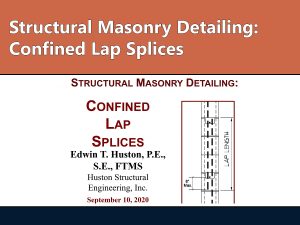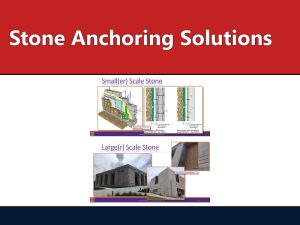
Structural Masonry Detailing: Confined Lap Splices
Most designers who engineer reinforced masonry know that code provisions for lap splice lengths have been evolving over the past few code editions. A newer confinement-steel option is available that has the potential to significantly reduce the lap splice lengths, especially for larger diameter bars, through confinement of the structural reinforcement.…


